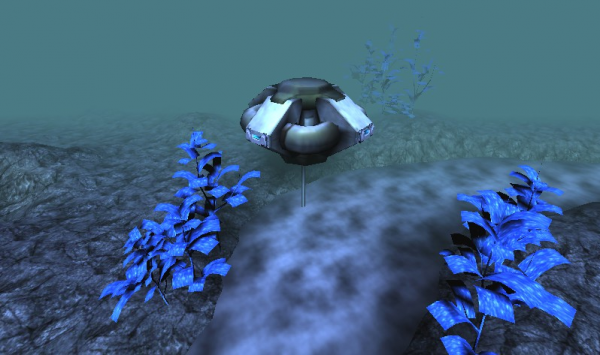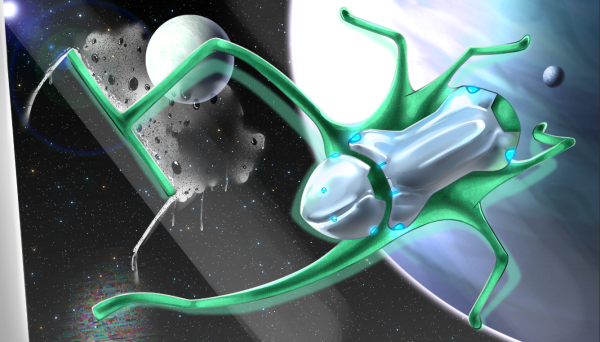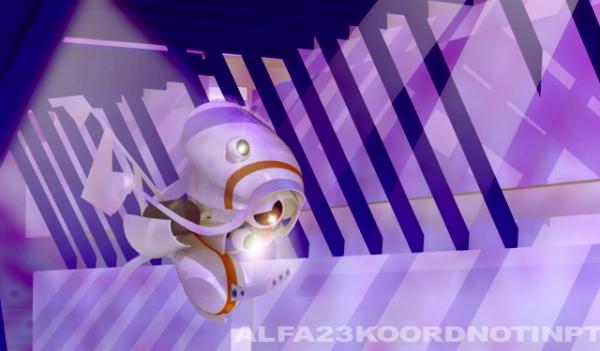BY LETTER
Robotics
Robotics is the application of Artificial Intelligence to the control of machines; the art, science, and technology of designing and manufacturing robots and vecs.
The field of Robotics combines limited ai and mechanical engineering, and encompasses such diverse sub-fields such as bionics and biomimesis, navigation systems, sensors, pattern recognition methods, servos, molectronics, real-time control, autonomous behavior, aioid software, and virch and utility fog simulations, and more.
During the late Atomic and early Information age, before the development of ai sentience, robotics included industrial robots, remote-controlled devices, and interplanetary probes, none of which were even sub-sentient. With the coming of turingrade ai and above during the middle Information Age onwards, there was a wealth of developments, including homebots, companion systems, service bots, autonomous vehicles and anvecs. By the interplanetary period robotics included the development of utility aioids, lovebots, SCMs, self-replicating machines (neumanns), interstellar probes, sentient vehicles, primitive mecha, and vecs. There were further developments during the First Federation period and after, including integral mechosystems, biomimetic and hylomimetic mecha, replicants, biobots, vec empires, and autowars and biowars, as developed nanotech allowed robotics and biotech to merge, ai passed new singularities, and advances in interstellar propulsion enabled whole new generations of space craft. Nowadays robotics and robots of all sorts from the most subsentient service bot to the transapient vec ai node are such an integral part of modern civilization, and it is impossible to conceive of life without them.
The term "robotics" was coined by Atomic Age scientist and fabulist Isaac Asimov, based on the late Industrial Age fabulist Karel Čapek's term "robot".
The field of Robotics combines limited ai and mechanical engineering, and encompasses such diverse sub-fields such as bionics and biomimesis, navigation systems, sensors, pattern recognition methods, servos, molectronics, real-time control, autonomous behavior, aioid software, and virch and utility fog simulations, and more.
During the late Atomic and early Information age, before the development of ai sentience, robotics included industrial robots, remote-controlled devices, and interplanetary probes, none of which were even sub-sentient. With the coming of turingrade ai and above during the middle Information Age onwards, there was a wealth of developments, including homebots, companion systems, service bots, autonomous vehicles and anvecs. By the interplanetary period robotics included the development of utility aioids, lovebots, SCMs, self-replicating machines (neumanns), interstellar probes, sentient vehicles, primitive mecha, and vecs. There were further developments during the First Federation period and after, including integral mechosystems, biomimetic and hylomimetic mecha, replicants, biobots, vec empires, and autowars and biowars, as developed nanotech allowed robotics and biotech to merge, ai passed new singularities, and advances in interstellar propulsion enabled whole new generations of space craft. Nowadays robotics and robots of all sorts from the most subsentient service bot to the transapient vec ai node are such an integral part of modern civilization, and it is impossible to conceive of life without them.
The term "robotics" was coined by Atomic Age scientist and fabulist Isaac Asimov, based on the late Industrial Age fabulist Karel Čapek's term "robot".
 Image from Alex Mulvey | |
| Robot probe sampling water on a life-bearing world | |
Articles
- Artificial Muscles - Text by Steve Bowers
Artificial muscle analog material often used by robots and other machines, and by sophonts such as cyborgs and vecs. There are many types of myomer with a wide range of strengths and resistance to damage, from simple memory polymers to so-called Ultimate Muscles. - Autonomous Doctors - Text by Ryan B
Also known as healers, robo-doctors, exodocs (with many more names varying by culture). Autonomous Doctors (autodocs) are a class of bot designed for medical intervention and treatment independent of sophont instruction. - BAESFTLA (Extensible Matter) - Text by Johnny Yesterday
Biaxially Extensible Scrolling-Folds and Telescopic-Lamellae Architecture. - Bespoke Moravec Design - Text by Ryan B
A phenotypic design philosophy for Vec clades that advocates modular design of body parts. - Biobots - Text by M. Alan Kazlev
Bioengineered organisms, e.g. bacteria, neogens, etc, modified to act out specific orders. Biobots of some form or another have been used since the middle information period for nanotech (bionano), production, monitoring, medicine and much more. - Biomachine - Text by M. Alan Kazlev and AI Vin
Any machine or device based on organic components rather than inorganic mechanisms. - Blockbot - Text by M. Alan Kazlev and AI Vin
Modular meso- to micro-scale robots (each unit being 1mm3 to 1cm3 in volume, although there are also versions with units several centimeters across) intended for space development, construction, foglet duties, etc. - Bot Marxism - Text by Liam Jones
Revolutionary and liberationist robot and vec political movement. - Botworld - Text by Stephen Inniss
A large area that is dominated by, or consists entirely of, self-replicating and self-repairing forms which are of mechanical origin. - Bushbot, Bushvec - Text by M. Alan Kazlev
A fractal vec, a flexible robot structure, where each manipulator branches off into smaller copies of itself, forming a fractal tree over many scales (usually down to the nanoscale). Each branch contains a distributed system to calculate movement and minimize central processing. Many SI:1 entities use a mobile bushbot to interface with the ril. - Caving Drone - Text by Tom Mazanec
Remote Cave Exploration Technology - ClearEye - Text by Johnny Yesterday
An optical sensor that cleans itself by spinning. A common design for vecs, bots, or cyborgs that operate in debris-filled environments - Cybernetic Livestock - Text by Steve Bowers
Robocows & so on - Cybernetics - Text by M. Alan Kazlev and Stephen Inniss
In popular usage, the study of the creation of cyborgs through the use of dryware/hylotech such as mechanical, electronic, and bionic implants, augments, and neuroprostheses. In technical usage, the study of communication and control systems based on regulatory feedback, with application in a number of fields such as sociology, memetics, biology, engineering, artificial intelligence, and information theory. - Cytobot - Text by M. Alan Kazlev
A bot approximately the size of a cell. Alternatively, a bionano or biomeso-based and/or built or grown organic device the size and shape of a biological cell; an artificial but still organic cell that can be given instructions like any nano or mesobot. - Discwuzit - Text by James Ramsey
Term for a clade of peculiar hiders, believed to have evolved from neumanns or madverts of some kind, that make cynical and pessimistic comments on a wide range of topics, usually via the Ghost Net. They have considerable intelligence capabilities but often give people a 'sour grin' when an inadequate answer is provided to one of their persistent questions. - Discwuzit Deluge - Text by James Ramsey
A term for a self replicating swarm of Discwuzits usually associated with luddite clades and houses. - Dormbot - Text by Stephen Inniss after the term invented by M. Alan Kazlev
Another term for homebot; sometimes used in reference to bots, and sometimes in reference to similarly specialized vecs who are domestics or who oversee domestic bots. Vecs who are called dormbots may regard the term as a simple description of their occupation or they may regard it as an insult; this varies by cultural context and personal preference. - Factotums - Text by Dagon
Generic term for degenerate discarded, obsolete or homeless vecs or bots. - Foglet - Text by M. Alan Kazlev
A mesobot that consists of a human-cell-sized device with twelve arms pointing in all directions. At the end of the arms are grippers that allow the foglets to grasp one another to form larger structures. These bots are intelligent and can merge their computational capacities with one another to create a distributed intelligence. Foglets are widely used by nanocyborgs, and there are a number of posthuman civilizations based on foglet technology. Because of the possibility of unpredictable ascension or subversion, many polities regard foglet clades with suspicion - Frankenstein Syndrome - Text by Stephen Inniss
Many of the uninformed believe the story of Frankenstein to be historical. Scholars have in fact identified it as a cautionary tale from the late Industrial Age on Old Earth: created sophonts, particularly those who are unhappy, may come to despise their creators and even seek to destroy them. - Gelbot - Text by Ryan B
An omnibot; a mobile mass of smart matter (often gel-like) capable of extruding various tools - Golem (bot) - Text by Anders Sandberg
Utility mesites (heavy foglets) animated by an AI controlling them. They are usually makeshift constructions thrown together when an transapient being is in urgent need to manipulate the physical world but lacks an avatar nearby and simply commandeers whatever hardware is around, shapes it into a being and sets to work. Under favourable circumstances and with the right software add-ons, a modosophont ai can produce a 'stock' golem from an array of templates, but of course cannot match the improvisational skill of transapient AIs. Golem is a term from from Old Earth Jewish mythology. - Guardbots, Securitybots and Warbots - Text by Ryan B (Rynn)
Companion security robots. - Homebot - Text by M. Alan Kazlev
In archaic usage (Interplanetary and First Federation era) an abbreviation of the term "household robot" or "home robot". - Insectbot - Text by M. Alan Kazlev
Any small (size from <1 mm to 10 cm) robot; whether autonomous or semi-autonomous, sentient, subsentient, or non-sentient; usually designed along insectomorphic lines, both externally and internally. - M-Life - Text by M. Alan Kazlev
Machinic non-biological life as seen in neumanns, hylonanecologies, and other inorganic organisms or ecologies. In practise M-life, B-life and A-Life tend to merge, especially because of the ubiquity of biotech and bionanotech. - Mesobot - Text by M. Alan Kazlev
An autonomous device or structure, whether sentient or non-sentient, of mesoscale size (generally 10-7 to 10-6 m); very large nanodevices like foglets and cytobots. May be organic and biological, mechanical and aioidal, or any combination of the two. - Micro-ElectroMechanical System (MEMS) - Text by M. Alan Kazlev
Information and Interplanetary Age term for mechanical microbot or mesobot. - Microbot - Text by M. Alan Kazlev
Autonomous device on the microscale (10-6 m); larger than a nanobot but smaller than a macroscopic bot (the limit is usually set somewhat arbitrarily at one millimeter). Microbots are used for a variety of tasks such as monitoring, repairs, nanite transport and production and smart materials. - Mini-bot - Text by Todd Drashner
Nanotech-based collapsible robot. - Mitebot - Text by M. Alan Kazlev
Microscopic or near-microscopic organic or mechanical robot, usually arachnid-like in form. Similar to a gnatbot except that it crawls rather than flies. - Modubots - Text by Steve Bowers and AI Vin
Wheat-grain sized microbots capable of linking together into a multitude of functional shapes. - Muschine - Text by M. Alan Kazlev and AI Vin
Subsentient biomachines. Widely used in the Zoeific Biopolity and elsewhere. - Muuh Bot - Text by Steve Bowers
Biological robots used by the alien Muuh. - Nanite - Text by M. Alan Kazlev; amended by Stephen Inniss and Ryan B
Generic term for a molecular or nanoscale device, whether bionano or hylonano; a cluster of reactive nanoparticles. - Nanomachine - Text by M. Alan Kazlev and Pran Mukherjee
Generic term for a microscopic or molecular mechanical (non-biotic) device, for example a hylonanite or nanobot. It is important to note that nanomachines (and indeed nanites in general) do not have to be nanoscale; they may simply be microscale machines that can manipulate nanoscale objects. - Pivoting Aerodyne Utility Bot - Text by Johnny Yesterday
General-purpose flying robotic platform. - Plantbots - Text by Stephen Inniss and Steve Bowers
Dry nano or synano robots powered by light and capable of autonomous growth and reproduction; generally sessile or with limited movement. So named because they are equivalent in role to biological plants. - Polypedal Pots and Potvecs - Text by Johnny Yesterday
Polypedal pots are a class of whimsical robots which date from the late 1st Century a.t. to present times. As the name suggests, they are legged, motile containers that generally house plants or sessile animals. - Ratbot - Text by Jorge Ditchkenberg
The earliest type of practically usable and self-governed bot known to the terragens. It emulates some aspects of terragen rodents. - Robotics - Text by M. Alan Kazlev
The application of Artificial Intelligence to the control of machines; the art, science, and technology of designing and manufacturing robots and vecs - Sepiiform Remotes - Text by Ithuriel
Robotic devices shaped like squid or cuttlefish - Softbot - Text by M. Alan Kazlev
Biological robot, an alife built entire of organic components. It is alive like any carbon- or exotic-chemistry based life-form. May be of any intelligence grade, from subsapient to transapient. - Survival Imperative, The - Text by Anders Sandberg, with additions by Steve Bowers
Modern ai term for the belief among human programmers that true AI require motivational systems linked to individual survival. - Synsects - Text by Stephen Inniss
Small bots, or occasionally cyborg/neogen or synano constructs on the scale of arthropods. They exhibit artificial instinct (as opposed to artificial intelligence), and are capable, like insects of considerably complex emergent behaviour. They are a ubiquitous in most modern mechosystems. - Telescopic Limbs - Text by Johnny Yesterday
Robotic limbs capable of extreme elongation with respect to their minimum length - Temporary Bodies - Text by Michael Boncher, revised by Steve Bowers 2015
Bot or biobot body that is used to temporarily house the mind of a virtual person or any other discorporate entity. - Ultimate Muscles - Text by Ryan B (Rynn) updated 10/5/20
Artificial, very strong, muscle-like machines. - Ultimate Vecs - Text by Arik
Vecs incorporating Ultimate Muscles in their design - Washer, Dryer, Automatic-Ironer - Text by Ryan B
Everyday Tech in the late Information Age
Development Notes
Text by M. Alan Kazlev
Initially published on 22 December 2001.
Initially published on 22 December 2001.
Additional Information








